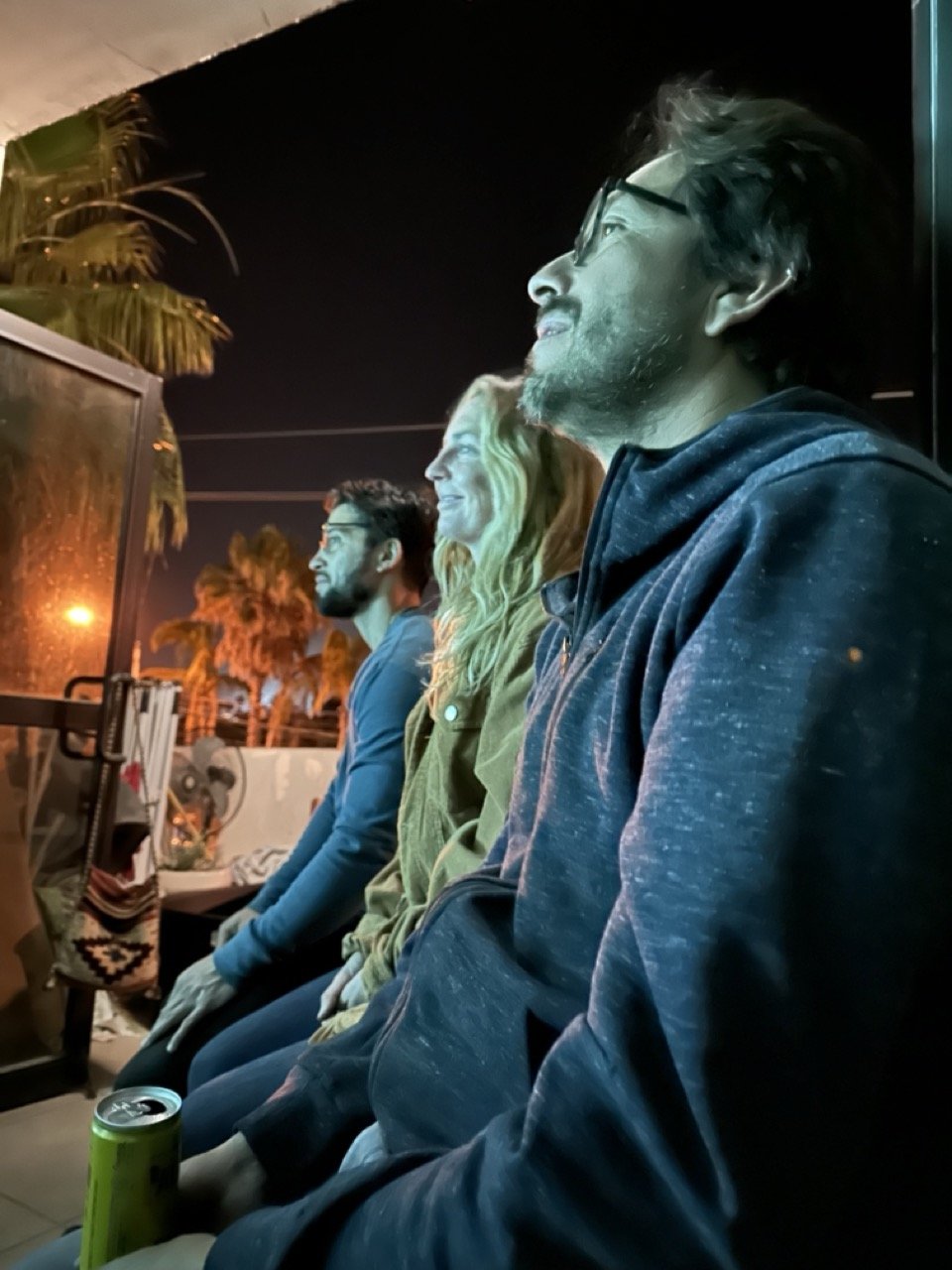Territories Inside the Mind
An exploration of the inner world—its voices, narratives, impulses, and inherited programs.
This line of inquiry asks how identity, desire, and perception are shaped from within. Through writing, movement, immersive installations, and public dialogue, these works examine the layers of self that form beneath language—how we move, choose, resist, and belong. They trace the boundaries of what is truly ours, and what has been absorbed.
Against, Upon, Beneath
Immersive Visual Installation, Sentence-Based Deprogramming / Coming 2025
This immersive visual art piece explores our psychological and emotional relationship to land—how we name it, claim it, and speak of it, and how, in turn, it may regard us. Participants are invited into a darkened room where a slideshow unfolds: a rapid sequence of sentence fragments, prepositions, questions, colors, and photographs. Some statements are incomplete. Others flash for only a moment. The effect is disorienting, exposing the participant to a subtle form of deprogramming.
At its core, the piece poses a relational question: How does the land feel about me? What happens when the language we use to describe place—owner, steward, immigrant, tenant—is reversed, redirected, or made visible as power-laden? Can a change in preposition shift the entire dynamic?
Words appear quickly, leaving little room for intellectualizing. Participants are prompted to respond from instinct. The goal is not to capture all the answers, but to map the friction between what is named and what remains unnamed—between what we believe about our relationship to land and what we have yet to examine.
Parts Divided
Participatory Performance, Writing & Movement-Based Exploration / First Iteration: November 26, 2022 / Casa de la Cultura, Barrio Antioquia, Medellín, Colombia
In collaboration with contemporary dancer Andrea López
An interdisciplinary happening that invites participants to journey into the layered voices within—those inherited, imagined, silenced, and unknown. Through a guided blend of writing, somatic activation, interpretive dance, and book-making, Parts Divided asks: If there are many voices inside you, how do you know which one is truly your own?
The experience unfolds through a series of auditory, visual, and physical prompts designed to loosen the boundary between the conscious and subconscious. Participants explore where their inner voices originate and which of them generate movement in their lives. The process reveals patterns of influence—internalized forces, familial echoes, cultural narratives—and offers the possibility of reclaiming authorship over one’s direction.
The performance includes a solo interpretive dance set to Amanda’s written words, used as a visual and audio prompt, a book-making exercise, and a final group conversation for collective reflection and integration.
Origins
This piece was developed during a one-month residency with Proyecto Florecer, a community-based program for women in Medellín. Created in a city shaped by migration and movement, Parts Divided emerged from collective explorations of displacement, arrival, and belonging. The initial participants included refugee women, locals, and expatriates—each drawn by different forces, yet all arriving to the same place. The work reflects this tension between inner direction and external pressure, between flight and arrival.
Dioses de México: Film Screening + Book Exchange
Collaborative Event, Film & Public Dialogue / Hosted by El Nido & Abre Tu Boca / February 24, 2023 / Artezes Studio, Todos Santos, BCS
As the closing event of Abre Tu Boca’s first season, this collaborative evening brought together community dialogue, film, and literary exchange. The evening opened with a book swap hosted by Amanda Aileen Fisher, inviting attendees to trade old titles for new ones, offering the gesture of exchange as both metaphor and practice.
Following the swap, El Nido Cine Club presented Dioses de México, a visually stunning, dialogue-free documentary that explores rural resistance to modernization and the many ways people continue to live outside dominant narratives of progress. The film became a shared sensory meditation on place, tradition, and identity—resonating with the residency’s larger inquiry into internal and external displacement.
This event marked the culmination of a season-long exploration into creative practices that bridge the personal and the collective, the visible and the unseen.






